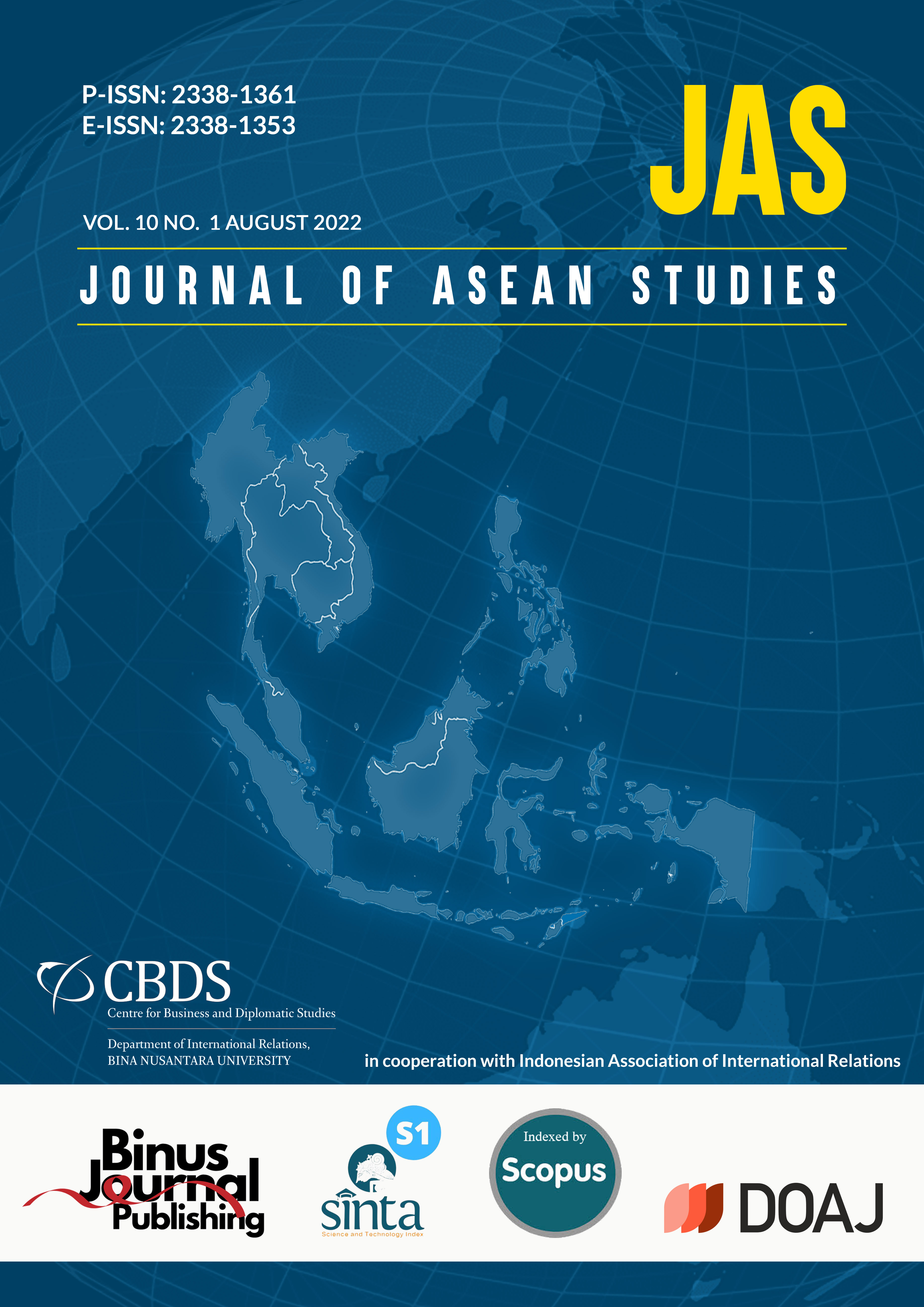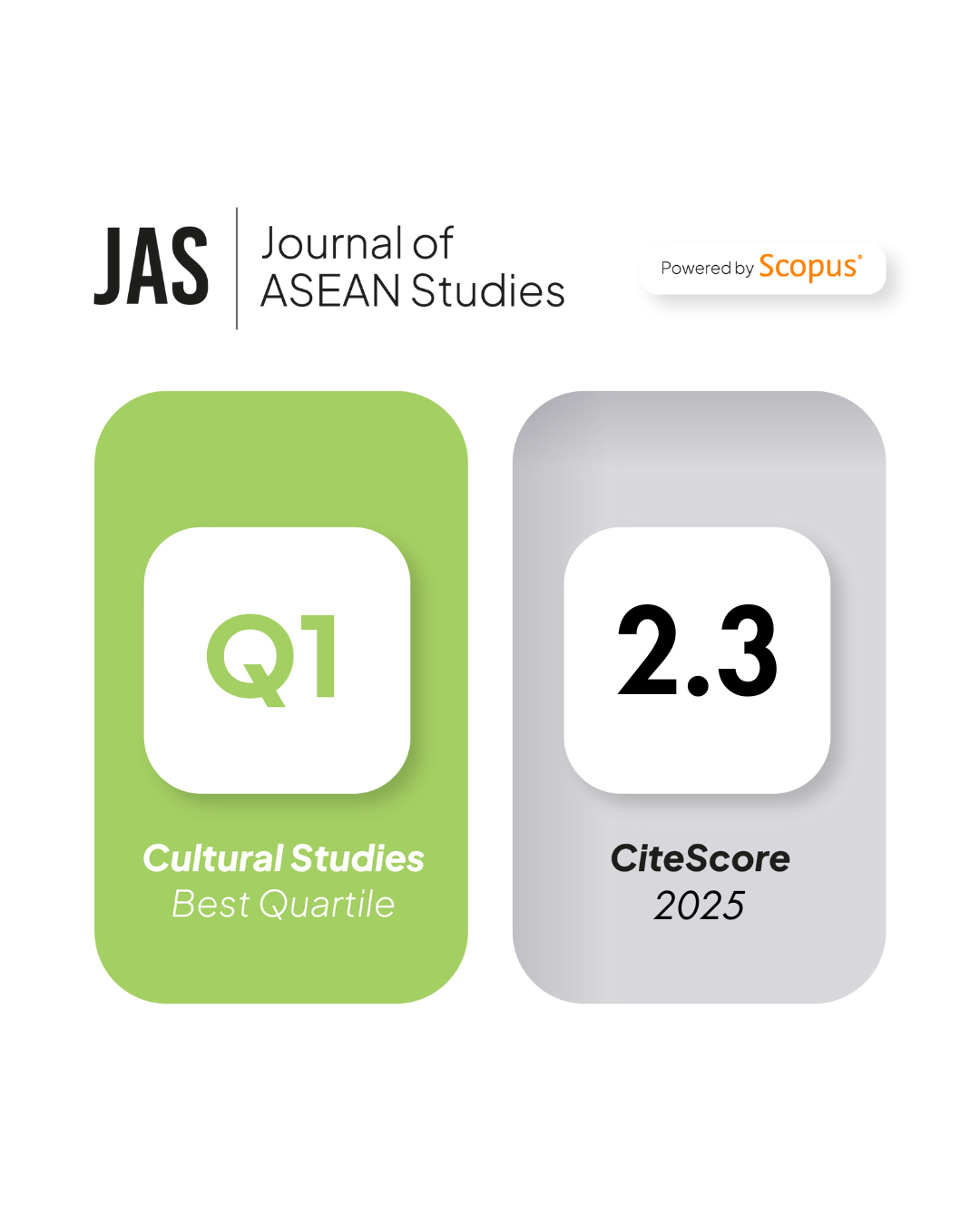A Visual Identity-Based Approach of Southeast Asian City Branding: A Netnography Analysis
DOI:
https://doi.org/10.21512/jas.v10i1.7330Keywords:
city branding, city identity, netnography, place branding, visual identityAbstract
Cities and places had been progressively being marketed as brands by using the concept of ‘City Branding', which is a unique idea. The scholars of ‘City Branding’ believed that the concept of branding helps the city in marketing activities. A city metaphorically could be seen as an entity given the advantage to display its visual characteristics to tourists, visitors, and residents. Unique visual identity such as iconic architecture and graphic design could make a city stands out from the others. Thus, the research examined the role of visual identity in city branding. Specifically, the aim was to contribute to better understanding of the concept of ‘visual identity’ in Southeast Asian cities. Netnography approach was employed to gain better understanding of the notion of visual identity of city branding and refine a conceptual framework that has been developed based on the existing literature. Elements such as iconic structure and graphic design (logo and slogan) of four cities in Southeastern Asia were emphasized. The research concludes that the components of the visual identity of the cities need to be reshaped to be aligned with their visual characteristics in order to boost their competitiveness among the global city brands.
References
Adamu, A. A., Mohamad, B. B., & Rahman, A. A. (2018). Towards measuring internal crisis communication: A qualitative study. Journal of Asian Pacific Communication, 28(1), 107-128. https://doi.org/10.1075/japc.00006.ada
Adamu, A.A., Mohamad, B., & Rahman, A. A. (2016). Antecedents of internal crisis communication and its consequences on employee performance. International Review of Management and Marketing, 6(7S), 33-41.
Anholt, S. (2006). How the World Views Its Cities (2nd Ed.). Bellevue: Global Market Insight.
Anholt, S. (2010). Definitions of place branding – Working towards a resolution. Place Brand Public Diplomacy, 6(1), 1–10. https://doi.org/10.1057/pb.2010.3
Arnould, E. J. & Wallendorf, M. (1994). Market-oriented ethnography: Interpretation building and marketing strategy formulation. Journal of Marketing Research, 31(4), 484-504. http://dx.doi.org/10.2307/3151878
Ashworth, G. J. (2009). The instrument of place branding: How is it done? European Spatial Research and Policy, 16(1), 9-22. http://dx.doi.org/10.2478/v10105-009-0001-9
Balakrishnan, M. S. (2009). Strategic branding of destinations: A framework. European Journal of Marketing, 43(5-6), 611-629. http://dx.doi.org/10.1108/03090560910946954
Björner, E. (2013). International positioning through online city branding: The case of Chengdu. Journal of Place Management and Development, 6(3), 203-226.
Carù, A. & Cova, B. (2008). Small versus big stories in framing consumption experiences. Qualitative Market Research: An International Journal, 11(2), 166-176. http://dx.doi.org/10.1108/13522750810864422
Christgau, J. & Jacobsen, M. V. (2004). Byen i oplevelsessamfundet. (Unpublished MA dissertation, Copenhagen Business School).
Corbin, J. M. & Strauss, A. (1990). Grounded theory research: Procedures, canons, and evaluative criteria. Qualitative Sociology, 13(1), 3-21. https://doi.org/10.1007/BF00988593
Deckker, T. (2000). Brasilia: City versus landscape. In T. Deckker (Eds.), Modern City Revisited (1st Ed.). London: Taylor & Francis.
Dinnie, K. (2010). City Branding: Theory and Cases (11th Ed.). London: Palgrave Macmillan.
Elliott, R. & Jankel-Elliott, N. (2003). Using ethnography in strategic consumer research. Qualitative Market Research: An International journal, 6(4), 215-223. https://doi.org/10.1108/13522750310495300
Erikson, E. (1971). Identitet, ungdom og kriser. Copenhagen: Hans Reitze.
Evans, G. (2005). Measure for measure: Evaluating the evidence of culture's contribution to regeneration. Urban Studies, 42(5-6), 959-983. https://doi.org/10.1080%2F00420980500107102
Evans, G. (2015). Rethinking Place Branding and Place Making Through Creative and Cultural Quarters. Springer Books.
Fasli, M. (2010). A model for sustaining City Identity. Case Study: Lefkosa (Nicosia) in North Cyprus. (Doctoral Dissertation). Germany: VDM Verlag Dr. Müller.
Foroudi, P., Gupta, S., Kitchen, P., Foroudi, M. M., & Nguyen, B. (2016). A framework of place branding, place image, and place reputation: Antecedents and moderators. Qualitative Market Research: An International Journal, 19(2), 241-264. http://dx.doi.org/10.1108/QMR-02-2016-0020
Giovanardi, M., Lucarelli, A., & Pasquinelli, C. (2013). Towards brand ecology: An analytical semiotic framework for interpreting the emergence of place brands. Marketing Theory, 13(3), 365-383. https://doi.org/10.1177%2F1470593113489704
Govers, R. (2013). Why place branding is not about logos and slogans. Place Branding and Public Diplomacy, 9(2), 71-75. http://dx.doi.org/10.1057/pb.2013.11
Hankinson, G. (2004). Relational network brands: Towards a conceptual model of place brands. Journal of Vacation Marketing, 10(2), 109-121. http://dx.doi.org/10.1177/135676670401000202
Julier, G. (2005). Urban designscapes and the production of aesthetic consent. Urban Studies, 42(5-6), 869-887. https://doi.org/10.1080%2F00420980500107474
Kavaratzis, M. (2008). From city marketing to city branding: An interdisciplinary analysis with reference to Amsterdam, Budapest and Athens. (Doctoral dissertation). University of Groningen, Netherlands.
Kavaratzis, M. & Ashworth G. J. (2007). Partners in coffeeshops, canals and commerce: Marketing the City of Amsterdam. Cities, 24(1), 16-25. https://doi.org/10.1016/j.cities.2006.08.007
Kavaratzis, M. & Dennis, C. (2018). Place branding gathering momentum. Place Branding and Public Diplomacy, 14(2), 75–77. http://dx.doi.org/10.1057/s41254-018-0098-6
Kavaratzis, M. (2004). From city marketing to city branding: Towards a theoretical framework for developing city brands. Place Branding, 1(1), 58-73. https://doi.org/10.1057/palgrave.pb.5990005
Kavaratzis, M. (2005). Branding the city through culture and entertainment. Journal Aesop, 5, 1-7.
Kavaratzis, M. & Ashworth, G. J. (2005). City branding: an effective assertion of identity or a transitory marketing trick? Tijdschrift voor Economische en Sociale Geografie, 96(5), 506-514. http://dx.doi.org/10.1057/palgrave.pb.5990056
Klein, N. (2000). No Logo: Taking Aim at the Brand Bullies. New York: Picador.
Kotler, B. P., Brown, J. S., & Knight, M. H. (1999). Habitat and patch use by hyraxes: There’s no place like home? Ecology Letters, 2(2), 82-88.
Kozinets, R. V. & Handelman, J. (1998). Ensouling consumption: A Netnographic exploration of the meaning of boycotting behavior. Advances in Consumer Research, 25(1), 475-480.
Kozinets, R. V. (1997). “I Want to Believeâ€: A netnography of the X-Philes’ subculture of consumption. In M. Brucks & D. J. Maclnnis (Eds.), NA - Advances in Consumer Research (pp. 470 - 475). Provo, UT: Association for Consumer Research.
Kozinets, R. V. (2001). Utopian enterprise: Articulating the meanings of Star Trek’s culture of consumption. Journal of Consumer Research, 28(1), 67-88. https://psycnet.apa.org/doi/10.1086/321948
Kozinets, R. V. (2002). The field behind the screen: Using netnography for marketing research in online communities. Journal of Marketing Research, 39(1), 61-72. https://doi.org/10.1509%2Fjmkr.39.1.61.18935
Langer, R. (2001). Place Images and Place Marketing. Institut for Interkulturel Kommunikation og Ledelse. Copenhagen Business School.
Lucarelli, A. & Olof Berg, P. (2011). City branding: A state-of-the-art review of the research domain. Journal of Place Management and Development, 4(1), 9-27. http://dx.doi.org/10.1108/17538331111117133
Lynch, K. (1960). The Image of the City. Cambridge: The MIT Press.
Mohamad, B., Bakar, H., Ismail, A. R.., Halim, H., & Bidin, R. (2016). Corporate identity management in Malaysian higher education sector: Developing a conceptual model. International Review of Management and Marketing, 6(7S), 175-180.
Mohamad, B., Ismail, A. R., & Bidin, R. (2017). Corporate identity management and employee brand support: enhancing marketisation in higher education sector. Malaysian Journal of Communication, 33(3), 178-195.
Mohamad, B., Nguyen, B., Melewar, T. C., & Gambetti, R. (2018). Antecedents and consequences of corporate communication management (CCM): An agenda for future research. The Bottom Line, 31(1), 56-75. https://doi.org/10.1108/BL-09-2017-0028
Mollerup, P. (1995) Marks of Excellence. A Theory of Trademarks and How They Work. Lund: University of Lund.
Mommaas, J. T. (2002). City branding: The necessity of socio-cultural goals. In T. Hauben, G. Ball, & E. Brinkman (Eds.), City Branding: Image Building & Building Images (pp. 32-48). NAi Uitgevers.
Nelson, M. R. & Otnes, C. C. (2005). Exploring cross-cultural ambivalence: A netnography of intercultural wedding message boards. Journal of Business Research, 58(1), 89-95. http://dx.doi.org/10.1016/S0148-2963(02)00477-0
Oguztimur, S. & Akturan, U. (2016). Synthesis of city branding literature (1988–2014) as a research domain. International Journal of Tourism Research, 18(4), 357-372. https://doi.org/10.1002/jtr.2054
Olins, W. (1999). Trading Identities: Why Countries and Companies are Taking on Each Other’s Roles. London: Foreign Policy Centre.
Oliveira, E. (2015). Place branding as a strategic spatial planning instrument. Place Branding and Public Diplomacy, 11(1), 18-33. http://dx.doi.org/10.1057/pb.2014.12
Rageh, A., Melewar, T. C., & Woodside, A. (2013). Using netnography research method to reveal the underlying dimensions of the customer/tourist experience. Qualitative Market Research: An International Journal, 16(2), 126-149. https://doi.org/10.1108/13522751311317558
Sáez, L, Periáñez, I, & Mediano, L. (2013). Building brand value in major Spanish cities. An analysis through municipal websites. Journal of Place Management and Development, 6(2), 120–143. http://dx.doi.org/10.1108/JPMD-04-2012-0011
Schultz, M. & Hatch, M. J. (2000). Scaling the Tower of Babel: Relational differences between identity, image, and culture in organizations. In M. Schultz, M. J. Hatch, M. H. Larsen (Eds.), The Expressive Organization: Linking Identity, Reputation, and the Corporate Brand. Oxford University Press.
Spiggle, S. (1994). Analysis and interpretation of qualitative data in consumer research. Journal of Consumer Research, 21(3), 491-503. https://doi.org/10.1086/209413
Stigel, J. & Frimann, S. (2006). City branding–all smoke, no fire? Nordicom Review, 27(2), 245-268. https://doi.org/10.1515/nor-2017-0241
Strauss, A. L. & Glaser, B. G. (1967). The Discovery of Grounded Theory: Strategies for Qualitative Research. New Brunswick: AldineTransaction.
Suherlan, A. (2016). Analisis karakteristik, perilaku, dan motivasi perjalanan wisatawan asal Sulawesi Utara ke Jakarta. Esensi Jurnal Bisnis dan Manajemen, 4(3), http://dx.doi.org/10.15408/ess.v4i3.2432
Taecharungroj, V. & Mathayomchan, B. (2019). Analysing TripAdvisor reviews of tourist attractions in Phuket, Thailand. Tourism Management, 75(6), 550-568. http://dx.doi.org/10.1016/j.tourman.2019.06.020
Yang, Z. & Fang, X. (2004). Online service quality dimensions and their relationships with satisfaction: A content analysis of customer reviews of securities brokerage services. International Journal of Service Industry Management, 15(3), 302-326. http://dx.doi.org/10.1108/09564230410540953
Zhang, L. & Zhao, S. X. (2009). City branding and the Olympic Effect: A Case Study of Beijing. Cities 26(5): 245–254. https://doi.org/10.1016/j.cities.2009.05.002
Downloads
Published
How to Cite
Issue
Section
License
Copyright (c) 2022 Bahtiar Mohamad

This work is licensed under a Creative Commons Attribution-NonCommercial 4.0 International License.






















